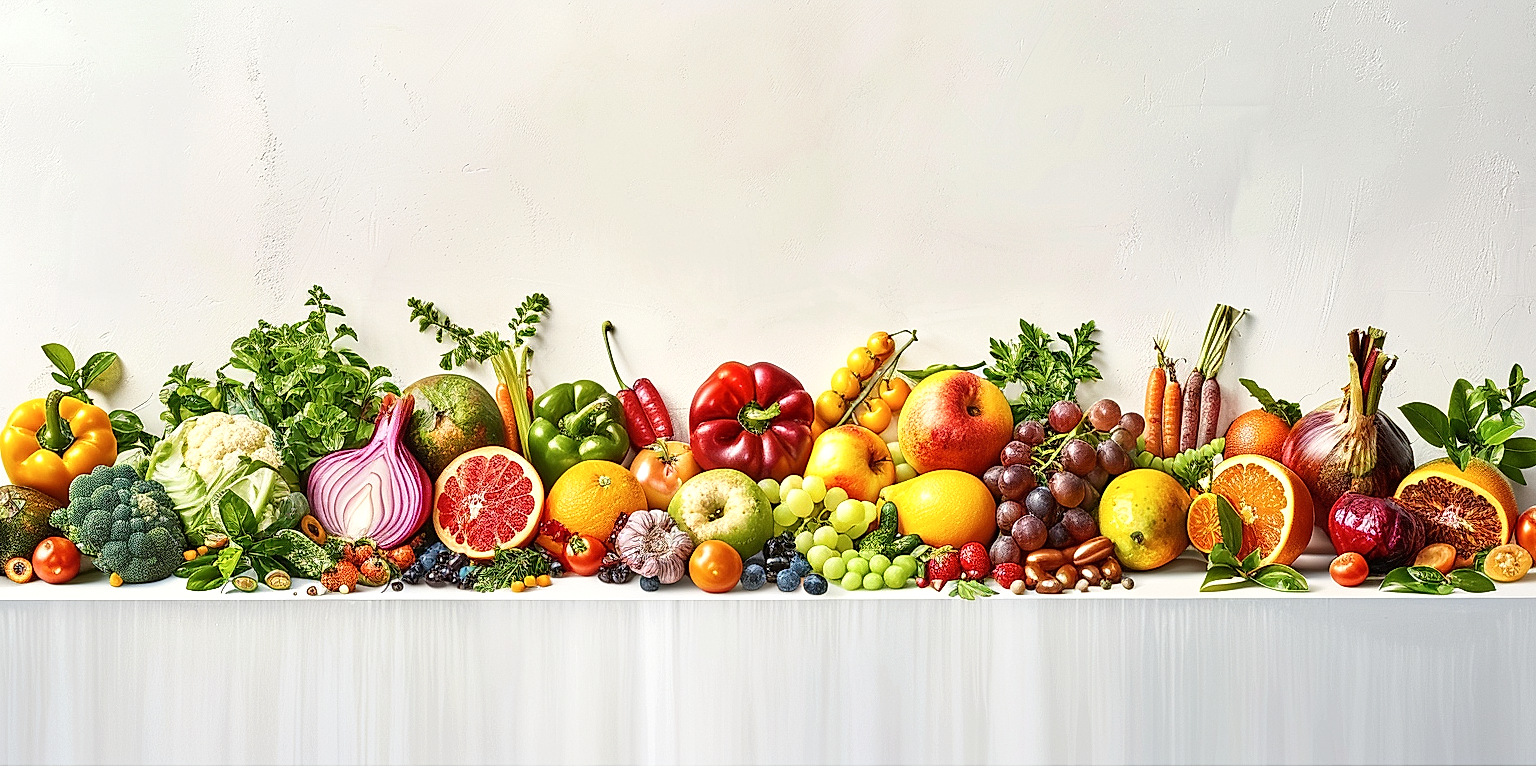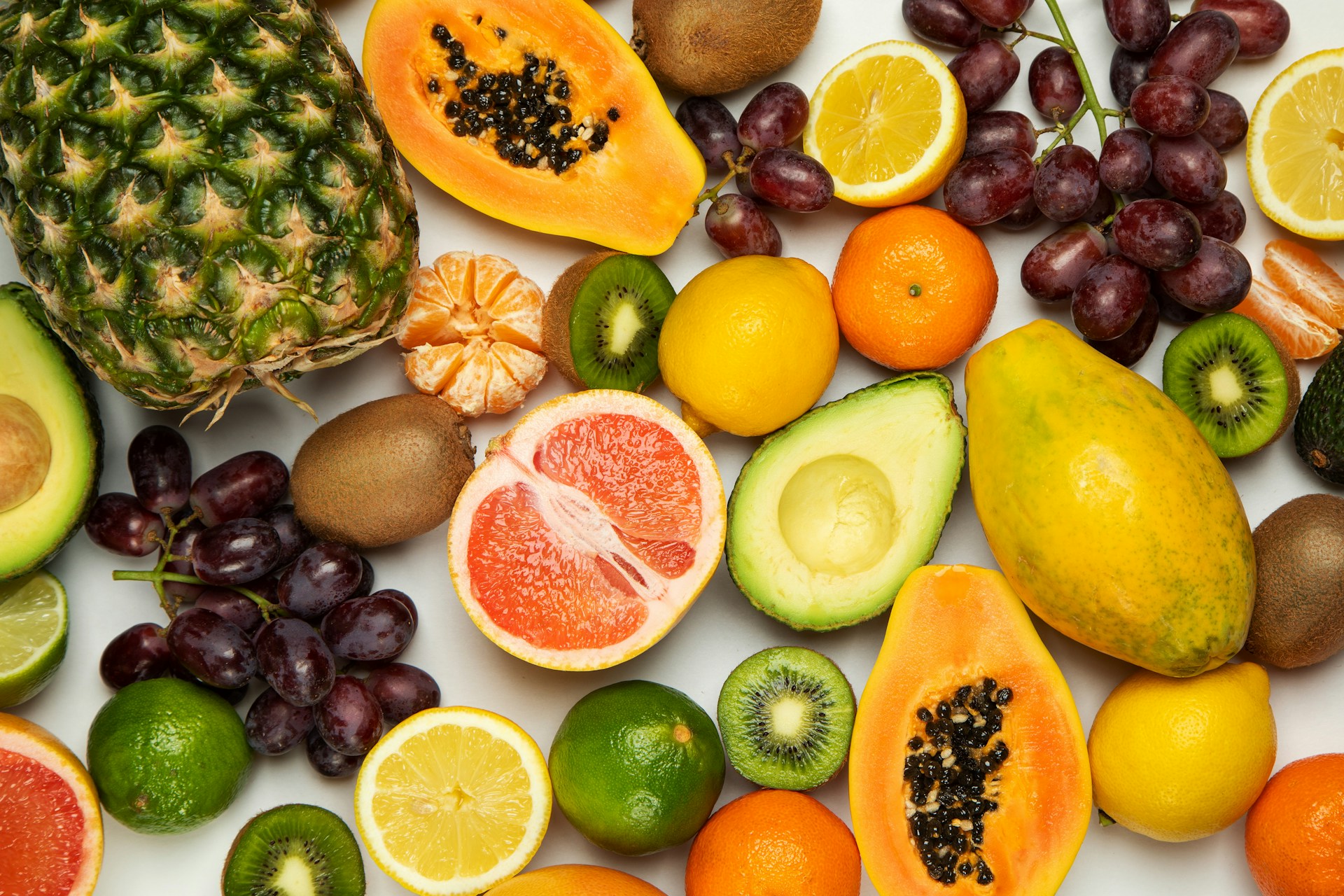Understanding the global trade landscape is crucial within the realm of produce processing industry.
As this sector is highly sensitive to international developments, keeping updated with trade trends can provide a competitive edge.
This is even more important considering the ongoing disruptions due to geopolitical situations and climate changes.
In this context, it is imperative to delve deep into these trends and their impact on produce processing.
Here, we examine how various trends influence the industry, from sourcing raw materials to moving finished products across borders.
In an interconnected world economy, these seemingly distant factors may have profound consequences on your business.
Contents
- Global Trade Trends Affecting Produce Processing
- 1. Increase in International Food Trade Regulations
- 2. Growth in Organic and Sustainable Produce Demand
- 3. Rising influence of e-commerce in agricultural trade
- 4. Shift towards plant-based and vegan products.
- 5. Expansion of fair-trade and ethical sourcing
- 6. Impact of Climate Change on Crop Yield
- 7. Technological Advances in Processing and Packaging
- The Bottom Line
Global Trade Trends Affecting Produce Processing
1. Increase in International Food Trade Regulations
The global food trade has expanded significantly over recent years, yet this growth has been equally matched by a considerable increase in international trade regulations.
This evolution is driven by a variety of factors such as public health concerns, environmental impact, economic disparities, among others.
There is a growing awareness and sensitivity towards food safety and protection, and this has facilitated stricter and more stringent regulations.
International trade laws now require transparent traceability of food products, from harvesting to processing and packaging, to final delivery.
Indeed, such tracking mechanisms ensure that food products meet hygiene and safety standards throughout their lifecycle.
Many countries have placed greater emphasis on stricter food safety laws to safeguard their citizens.
They demand rigorous quality checks, pesticide usage verification, documentation of cultivation techniques, and complete records of storage and transportation conditions.
These steps primarily aim at preserving the integrity of their domestic food supply, as well as maintaining fair competition amongst domestic and foreign suppliers.
The Food Safety Modernization Act (FSMA) in the U.S. and the European Union’s General Food Law (GFL) are prime examples of increased trade regulations.
Furthermore, the emergence of digital technologies has facilitated the implementation of such regulations.
Technologies such as blockchain help in maintaining transparent supply chains, while artificial intelligence and machine learning contribute to predictive analysis and risk assessment.
As a result, the global food trade has had to adapt to these regulatory demands, which often requires an investment in technology and resources.
This growing burden of regulation might be challenging for smaller businesses, yet it has raised the standards and enhanced confidence in international food trade.
Another noticeable trend is towards mandatory labeling requirements.
Many regulations now require food products to provide comprehensive information on their labeling, including nutritional facts, allergy warnings and Genetically Modified Organisms (GMO) status.
This kind of transparency empowers consumers to make informed decisions about the products they buy and consume.
2. Growth in Organic and Sustainable Produce Demand
In the global trade scene, a significant trend affecting produce processing is the increased demand for organic and sustainable products.
Consumer awareness and interest in health and environmental issues have been driving this growth.
Organic foods appeal to consumers because they are free from pesticides and other chemicals, making them perceived as healthier.
It’s not just individuals who are pushing for more sustainably sourced produce- major corporations are committing to sourcing responsibly too.
The growth in this sector is impressive, with the organic food market expected to reach $679 billion by 2027.
Another driver is the increase in vegetarian and vegan diets, as many consumers are seeking out organic options for their plant-based diets.
Besides, consumers are willing to pay a premium for organic products due to their belief in their superior quality and nutritional content.
This demand has direct implications for agricultural traders and produce processors who need to adapt accordingly.
They must ensure their produce is grown without synthetic pesticides or fertilizers and is not genetically modified.
This requires improvements in farming practices and careful supply chain management to ensure traceability and maintain organic integrity.
Produce processors also face challenges in meeting organic standards in their processing methods and ingredients.
Natural and organic labelling also require rigorous testing and certification, adding another layer of complexity for businesses in this sector.
However, despite these challenges, the benefits can be significant given the premium prices and growing market share enjoyed by organic produce in many markets.
The growth of sustainable and organic produce is not just a passing fad – it represents a shift in consumer values and behaviors that is likely to continue to shape the global agricultural trade for years to come.
In summary, the growth in organic and sustainable produce demand is both a challenge and an opportunity for traders and processors in the global agricultural arena.
3. Rising influence of e-commerce in agricultural trade
The skyrocketing growth of e-commerce has ushered in significant changes in the landscape of agricultural trade and produce processing.
Virtual markets have opened up new avenues for farmers and merchants to connect directly with consumers, sidestepping traditional distribution channels.
Online platforms offer a wider reach and greater flexibility, enabling growers and processors to tap into far-off markets that were previously inaccessible.
Furthermore, real-time data and advanced analytics provided by e-commerce platforms allow firms to optimize their supply chain management, aligning production with demand more efficiently.
With e-commerce, producers are not only able to sell their products more efficiently but also directly interact with buyers, gather valuable consumer insights, and tailor their offerings accordingly, fostering a more dynamic and responsive agricultural trade.
This means that e-commerce is reshaping agricultural trade by fostering a customer-centric market, where growers, retailers, and consumers are tightly interlinked.
Simultaneously, however, the digital shift presents its own set of challenges.
Particularly, small-scale producers may struggle to keep up with the technological demands, requiring investment in digital tools and skills.
Moreover, the competitive nature of online marketplaces can fuel a race to the bottom, pressuring producers to lower prices and potentially compromising product quality.
This underscores the importance of establishing fair trade practices within the virtual sphere to protect the interests of farmers and consumers alike.
Rampant cybersecurity threats is another crucial aspect that needs consideration. The theft of sensitive business information or customer data breach might end up causing substantial financial and reputational damage.
In the context of produce processing, e-commerce plays an instrumental role in determining the types of products that processors will focus on.
With an emphasis on delivering fresh and high-quality products directly to consumers, processors might decide to expand their product portfolios or invest in innovative processing methods that preserve the natural attributes of the products.
In essence, the rise of e-commerce in agricultural trade has vast implications on how produce is grown, processed, marketed, and consumed.
Thus, the need of the hour is to ensure that the transition to digital platforms strengthens the overall resilience of the food system, promoting sustainable and equitable trade practices.
4. Shift towards plant-based and vegan products.
In the global trade landscape, there has been a significant shift towards plant-based and vegan products.
This trend is driven by an increasing number of consumers prioritizing sustainability, health, and ethical considerations in their dietary choices.
Market research shows a robust growing demand for these products, which indicates a remarkable shift in consumer behavior and food preferences.
Consequently, the produce processing sector is challenged to adapt to these changes.
The plant-based and vegan market’s growth has led to an increased production, distribution, and consumption of various fruits, vegetables, nuts, seeds, and grains globally.
Companies are now investing more in the research and development of plant-based and vegan food products.
This not only includes ready-to-eat meals but extends to plant-based takes on traditional animal-based foods, like vegan cheese and meat alternatives.
As a result, the global trading of these unique agricultural products has seen a surge in recent years.
This trend also brings about changes in farming practices, with a rise in organic and sustainable farming methods.
Giving priority to such methods ensures the increased availability of vegan and plant-based products while minimizing harm to the environment.
As the demand is global, it is increasingly important to focus on fair trade practices to ensure that farmers and producers in developing countries get their fair share.
Additionally, as the shift towards vegan and plant-based food deepens, international food safety and standards are also expected to adapt and establish guidelines for these new products.
This change would ensure consumer safety and encourage more people to choose plant-based alternatives.
All of these developments reflect the significance of this global trade trend on the produce processing industry.
In response to the growing demands, farmers, food processors, and retailers are all adopting new strategies to cater to the vegan and plant-based market.
Therefore, it is safe to say that the shift towards plant-based and vegan products is reshaping the landscape of global agricultural trade in profound and lasting ways.
5. Expansion of fair-trade and ethical sourcing
As global trends continue to shift, there has been a marked expansion in the fair-trade and ethical sourcing realm within the produce processing industry.
This movement reflects a growing awareness and concern for the socio-economic conditions under which food is grown and harvested.
Increasingly, businesses are being held accountable not only for the quality of their products but also for their impact on workers’ rights and environmental sustainability.
The rise in consumer awareness and expectation has forced a restructuring of sourcing practices within the agricultural trade.
Third-party certification schemes such as Fairtrade International, Rainforest Alliance, and UTZ, are often utilized by companies to verify their supply chain practices.
Product labels indicating fair trade or ethically sourced produce are increasingly seen as a competitive advantage in the marketplace.
It denotes an alignment with consumer values and a commitment to a bigger cause beyond profit.
The demand for such ethically sourced products has been driven by a more informed and conscious consumer base.
It is notably prominent among millennials and Generation Z, who are more inclined to pay a premium for products with a positive social and environmental impact.
However, ethical sourcing is not without its challenges.
For one, there is the issue of scale and cost.
Smaller producers often struggle to meet the costs associated with certification and the broader changes needed to adopt sustainable and ethical practices.
Then, there’s the challenge of authenticity and transparency.
Loopholes in certification processes and the complex nature of global supply chains can lead to instances where the promise of ethical sourcing is not fully met.
Despite these hurdles, the trend towards fair-trade and ethical sourcing seems set to continue its upward trajectory, particularly as technology evolves to offer better solutions for tracking and verifying supply chain practices.
Given the weight of consumer preference, it is likely to become a critical aspect of global trade in the produce processing industry.
6. Impact of Climate Change on Crop Yield
The impact of climate change on crop yields forms a significant part of the global trade trends affecting produce processing.
The shifting global temperatures and inconsistent weather patterns caused by climate change are resulting in unpredictable harvests and reduced crop yields.
Regions once considered ideal for certain crops are now either too hot or too cold, destroying the traditional agricultural landscape.
Climate change is also leading to an increase in pests and diseases that thrive in warmer climates, further hampering crop productivity.
This shift in the agriculture landscape is forcing farmers and producers to rethink how and where they grow their crops.
Many are turning to technological innovations and genetically modified crops in a bid to adapt and survive the changing climate.
Conversely, some crops may potentially gain from warmer conditions, leading to new markets opening for some growers and closing for others
The decrease in crop yield due to climate change is causing a direct disruption to the global food supply chain.
Severe weather events such as floods, droughts, and storms, are causing massive loss of crop yield, further straining the global food supply.
As a result, the price of many agricultural products is rising, affecting both producers and consumers.
This impact of climate change stretches beyond the primary production and also hits the processing stage.
Reduced crop yields mean less raw material for processing, which can lead to increased production costs and decreased product availability.
For instance, if climate change continues to impact the supply of cocoa, we may see a rise in the cost of chocolate and a decline in its availability.
In response, the produce processing industry is seeking new ways to minimize waste, improve efficiency, and enhance climate resilience.
Agriculture and produce processing are also being viewed as potential solutions to climate change, through regenerative farming practices and other sustainable processes.
The impact of climate change on crop yield is a wake-up call for the global agriculture industry to take decisive action against global warming.
7. Technological Advances in Processing and Packaging
With the dawn of the 21st century, technological advancements have left no industry untouched, with the agriculture and produce processing industry also witnessing a substantial evolution.
In the age of globalization and increased international trade, it is vital that we implement enhanced processing and packaging technologies to ensure food safety, quality, and longevity of fresh and processed products.
Innovations in processing technologies such as high-pressure processing, pulsed light, and other non-thermal technologies have opened up new possibilities for improving the quality, safety, and shelf-life of fresh and processed fruits and vegetables.
Emerging packaging technologies such as smart and active packaging, nano-packaging, and biodegradable materials are revolutionizing the way we store, transport and market our food products.
With these innovative packing methods, we can now monitor the temperature, moisture, and gas levels in the packaging environment, ensuring optimal conditions for the preservation of food quality and safety.
Moreover, the adoption of various sensors and tracking technologies in the packaging process has provided for the implementation of real-time monitoring and traceability, enabling more efficient control over the distribution chain.
This ability to track and monitor the food from farm to fork not only helps in ensuring quality and safety but also builds consumer trust in the product.
The advent of automation in the produce processing industry has brought about significant changes in how we process and package food.
Automated processes, whether it’s sorting, peeling, cutting, or packaging, can not only dramatically increase efficiency and productivity but also significantly reduce human errors, leading to more consistent and high-quality products.
Additionally, it is worth noting that technological advancements< in the processing and packaging industry are also helping in addressing some environmental concerns.
Through the implementation of cleaner technologies, we are now able to reduce waste, conserve resources, and minimize the negative environmental impact associated with food processing and packaging.
There are also ongoing efforts towards exploring and developing more sustainable sources of energy for processing and packaging operations.
With the current trend of digitization and the rise of Industry 4.0, we can expect more advanced technologies such as AI, IoT, blockchain, 3D printing, and robotics to revolutionize the future of the produce processing industry.
This essentially means, we are on the verge of an era where the physical, digital, and biological worlds are going to intertwine, leading to what we call the 4th industrial revolution in the agri-food sector.
All these advancements convey a very clear message; with the increased demand for fresh, safe, and high-quality food products, the role of technology in processing and packaging will only become more prominent and essential in the future.
The Bottom Line
International food trade regulations and the growth in demand for organic, sustainable produce are catalyzing shifts in the agricultural industry.
The e-commerce revolution has seeped into agricultural trade, reshaping traditional markets, as more consumers gravitate towards plant-based and vegan products.
This, coupled with the expansion of fair-trade practices and ethical sourcing, is creating a more mindful consumption trend.
Climate change’s impact on crop yield cannot be understated, pressing the need for robust adaptations in farming practices.
Fortunately, advances in technology are fostering improvements in processing and packaging, enhancing efficiency and sustainability.
It appears, moving forward, that the agricultural sector must accommodate these evolving trends, challenging traditional norms and embracing innovation to stay relevant and profitable.




